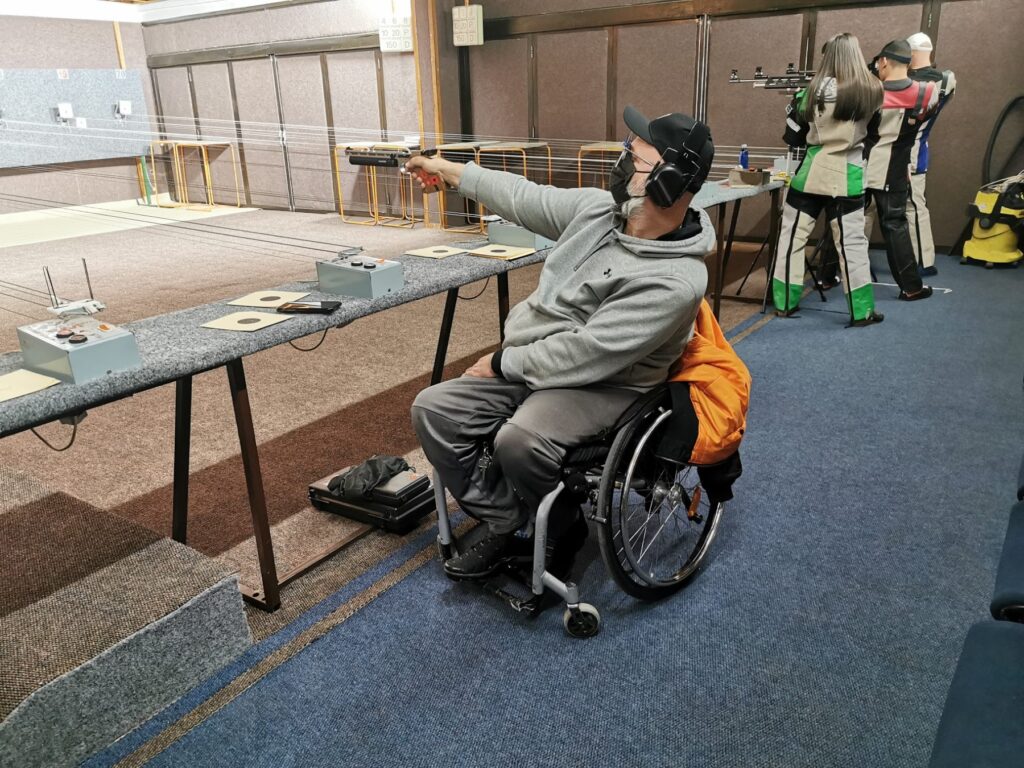Dear readers,
Finally, here is the translation of my latest blog post. Apologies for the delay; it took a bit longer than anticipated.
In a conversation with my dear friend Damira, we decided to write a blog each, in our own direction but to motivate each other to write a bit more frequently—I will write about the release valve as a coping mechanism (if someone knows a better terminology, please let me know). In the last two days, I had the opportunity to discuss this with two people, and I think this is a topic that is not sufficiently accessible and is rarely talked about. This is the first blog in which I will write in the role of a psychologist, hoping that this is just one of many that I will write. So, please don’t hold it against me if I make a mistake, it’s not intentional. I won’t change my writing style but will write as you have gotten used to, with lots of smiles, and jokes, but also with well-supported information (which is new for me).
So, the other day I went to the bank to get something done, and my banker, who I know quite well, seemed a bit off during our conversation. By nature, I’m intuitive and can sense things like this, but it’s also due to the knowledge I’ve gained mainly from Professor Trebješanin and his recommendation to read Paul Ekman, learning about non-verbal signals (body language, tone of voice, micro-expressions, etc.). I directly asked him if he had any sort of release valve (a definition of a release valve follows later in the text), and of course, he said he didn’t. I asked him if he takes any time for himself, which could include reading, writing, running, training, etc. He said no. In that conversation, one of his colleagues was there, and then another joined, and they all did the same—giving little time to themselves. I immediately reacted and offered a solution in the form of a question, “Have you ever shot a gun, and would you be interested in coming to the shooting range one day to try it out?” To which they all said “Wow, that’s a good idea” and so we agreed they would come.

This might sound trivial to you, but have you ever shot an air gun? Let me tell you something about it. I professionally engage in shooting sports, and when I enter the shooting range, I leave all problems behind. In the range, there’s only ME, the pistol or rifle, the bullet, the front sight, the trigger, and everything stops for those few minutes. And when the bullet flies through the barrel of the pistol, all our problems and dilemmas go with it, we expel all the bad energy from ourselves, and we carry with us the positive energy we receive. In these places, everyone is like one family, and everyone laughs, talks, and learns from each other. Sometimes we miss the target, but we don’t miss the reason why we’re there—to socialize, to work on our team building. When was the last time you did that? When did you and your team go out to socialize, to learn something about your colleagues, have you ever asked your colleagues how they are? If not, start today. Find some sort of release valve for yourself, whether it be reading, writing, running, skiing, dancing, yoga, playing games, or maybe shooting, table tennis (a fact; in America, in all nursing homes, there are table tennis tables, read what one study showed ).

We live in a time where we’re constantly bombarded with information and disinformation, it’s come to a point where we don’t even know which is which. When I analyze myself a bit, I can tell you it’s not easy for me, and most of you…
For those of you who know me, this will be familiar, but it’s not always so smooth. I too experience what Carl Gustav Jung would call “the shadow” (definition: The shadow, in the context of Carl Gustav Jung’s psychological model, represents an aspect of personality that the individual does not recognize or even if he does he tries to hide it sometimes even from ourselves. In Jung’s theory, the shadow often contains unwanted or repressed parts of the personality, including instincts, impulses, and forbidden thoughts that the individual typically considers unacceptable or undesirable. According to Jung, confronting the shadow is not an easy task as it requires facing the dark and unacknowledged parts of oneself. However, through this process, an individual can achieve a greater degree of self-awareness and internal harmony.) The shadow just waits to take command of our body and create some mischief, and then we wonder what happened. Well, that’s what happened. All of us carry archetypes within us, and the shadow is just one of them. Look at the picture that follows; it’s the best depiction of the shadow. Don’t be scared; it’s just an illustration, but believe me, at times, we’ve all had the opportunity to meet this side of ourselves that we hide even from ourselves, though we know it’s there. I once explained the Shadow like this: “What is within us and just waits to surface and take control, we know it’s there but pretend as if we don’t and don’t want to reveal to ourselves that we actually know it.”

Let’s return to coping mechanisms, what they are, and what they’re for.
Coping mechanisms are strategies that individuals use to deal with difficult emotions, stress, or traumatic events. These mechanisms can be conscious or unconscious and vary in their effectiveness. They help in managing or adjusting to emotional and mental challenges and can be healthy or unhealthy.
Healthy Coping Mechanisms
Problem-Focused Coping: Focusing on solving the problem that causes stress.
Emotional Self-Regulation: Learning how to manage and express emotions in a healthy way.
Seeking Social Support: Sharing concerns with friends, family, or professionals.
Relaxation and Meditation: Using techniques such as deep breathing, meditation, or yoga to reduce stress.
Physical Activity: Regular exercise to improve mood and reduce anxiety.
Unhealthy Coping Mechanisms
Avoidance and Denial: Ignoring the problem or pretending the stressor doesn’t exist.
Substance Abuse: Using alcohol, drugs, or medication as an escape from stress.
Overeating or Insufficient Nutrition: Using food as a way to cope with emotions.
Aggression and Venting Anger: Taking out frustrations on others.
Compulsive Behavior: Such as excessive shopping or gambling.
Identifying and adopting healthy coping mechanisms can significantly improve one’s ability to navigate life’s challenges, promoting mental and emotional well-being. On the other hand, reliance on unhealthy coping mechanisms can lead to further psychological and sometimes physical health issues. Recognizing when to seek professional help to develop healthier coping strategies is an important step toward personal growth and resilience.
The Importance of Coping
Coping mechanisms are crucial for mental health and well-being. Healthy coping mechanisms help reduce stress and promote psychological resilience, while unhealthy mechanisms can exacerbate problems and lead to long-term negative consequences. Understanding and developing effective coping strategies is an important part of self-help and psychological counseling.
Notes: In psychology, a release valve refers to a concept that allows individuals to release or express repressed or hidden emotions, thoughts, or desires in a way that is socially acceptable or less harmful. This idea stems from psychoanalytic theories, which emphasized the importance of finding ways to release repressed feelings to avoid psychological stress and disorders.
Here are a few key aspects of the release valve concept:
Emotional Release: A release valve enables people to express their repressed or unacceptable emotions in a way that does not cause harm to themselves or others.
Psychoanalytic Theory: Sigmund Freud, the founder of psychoanalysis, believed that unexpressed emotions and desires could lead to psychological problems. A release valve is a way to reduce the internal pressure created by these repressed emotions.
Socially Acceptable Expressions: Activities such as sports, art, writing, or acting can serve as release valves, allowing people to express their feelings in a constructive and socially acceptable manner.
Prevention of Negative Outcomes: Without a release valve, repressed emotions can escalate and manifest in the form of aggression, anxiety, or other psychological issues.
Personal Growth and Self-Discovery: A release valve not only helps in stress reduction but can also promote personal growth and greater self-awareness through the process of expression and reflection.
It’s important to note that concepts and techniques in modern psychology differ from those in traditional psychoanalysis, but the idea of the importance of emotional expression and finding healthy ways to cope with emotions remains critical.
There are many different conceptualizations of coping strategies, but five general types of coping strategies are 1. Problem-focused coping, 2. Emotion-focused coping, 3. Social support, 4. Religious coping, and 5. Meaning-making.
Coping mechanisms are a concept most commonly associated with the field of clinical and health psychology but are also explored in other branches of psychology, such as clinical, developmental, social, and organizational psychology, to mention a few. I regularly recommend to my friends, clients, and family to find some form of a release valve to ease their lives. Metaphorically speaking, just as a balloon filled with air without the possibility of release will eventually burst under pressure, so too will a hose without a release valve be unable to withstand the constant accumulation of content and pressure, inevitably leading to its burst.
Thus, if we do not find a way to release this pressure over time, a burst will occur, but in our case, it won’t be a hose or balloon that bursts, but ourselves and this burst will most likely occur in our head. Every day we hear and wonder what could lead to young people increasingly suffering from strokes, heart attacks, or other forms of attacks. Professor Nena once said, “Untreated stress becomes a pathology,” and pathology can kill us. Therefore, dear readers, find some form of release valve for yourselves, talk to someone about your problems, and listen to someone because we never know what’s happening in someone’s life. I advise you to hug more, talk face-to-face more, and listen to each other. Life is short and moves quickly, and tomorrow we will all be better if we are there for each other in the way we should be, empathetic, and beneficial to our society. When the time comes to cross to the other side and we see that one-second film of our lives where we feel everything we’ve done from both perspectives (ours and those we’ve affected), it’s already too late. So, dear readers, start today. Find a hobby, talk to someone, drop by the shooting range, or get in touch to play a round of table tennis. I’m IN, and what about you, dear readers? Shall we socialize and laugh at what we once were, confined between walls we built around ourselves, irritable, aggressive, and passive? I choose to work on myself; here I am writing, and that can be a release valve. Around New Year’s, we all make plans about what we’ll improve in ourselves this year. Let’s work on that, and next year we can summarize our experiences. Here’s an idea for another blog, and now I wish you a Happy New Year 2024, may you be alive, healthy, and happy every day.
